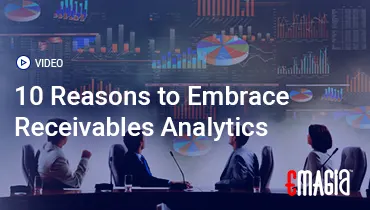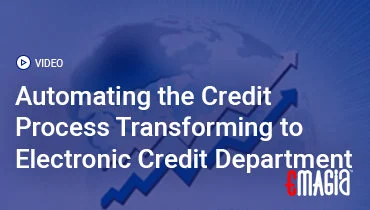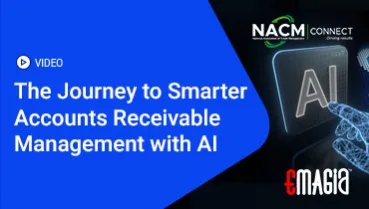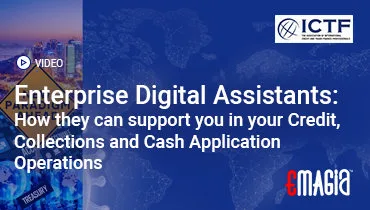Introduction: Unlocking the World of Online Payments
In the modern digital landscape, the ability to accept payments online is not just a convenience—it’s a necessity. For businesses, both large and small, the move to e-commerce has opened up a world of opportunity, but it also introduces a layer of complexity. At the heart of this digital commerce is the intricate system of online payment processing. This is the unseen engine that powers every successful transaction, ensuring that money moves securely and efficiently from your customer’s bank account to your own.
This guide will demystify the entire process. We will journey through the essential components, from the initial click of a “buy now” button to the final settlement of funds in your account. You will learn about the key players involved, the differences between a payment gateway and a payment processor, and how to choose the right system for your unique business needs. By the end, you’ll have a clear understanding of the mechanics, the security protocols, and the strategic decisions that can help you reduce costs and improve your bottom line.
Part 1: The Core Mechanics of Online Payment Processing
Understanding the Fundamental Concepts
Before diving into the intricate steps of a transaction, it is crucial to establish a foundational understanding. The term “online payment processing” refers to the entire series of events that occur when a customer pays for a product or service using a credit card, debit card, or other digital method over the internet. It’s a complex dance involving multiple entities, all working in concert to ensure security and speed.
A merchant’s success in the digital marketplace is directly tied to the efficiency and reliability of their online payment system. A seamless checkout experience can increase conversions, while a clunky or insecure one can lead to abandoned carts and lost sales. This makes a deep dive into the underlying technology and processes not just an academic exercise, but a critical business strategy.
What are the Key Components of an Online Payment Process?
The process is often invisible to the end user, but it’s composed of several interconnected elements. Think of it as a relay race, where each participant plays a specific, vital role. The main players are:
- The customer.
- The merchant (your business).
- The payment gateway.
- The online payment processors.
- The acquiring bank (merchant acquirers).
- The card networks (Visa, Mastercard, etc.).
- The issuing bank (the customer’s bank).
The seamless interaction between these components is what allows for a swift and secure online transaction. Understanding each role individually is the first step toward mastering the entire process.
Part 2: The Step-by-Step Online Payment Process
This section will meticulously detail the journey of a single transaction, from the moment a customer enters their card information to the point when the money is safely in your account. The entire process, which takes only a few seconds, can be broken down into two main phases: authorization and settlement.
The Authorization Phase: Getting the “Go-Ahead”
This is the real-time part of the transaction. It’s all about checking if the customer has the funds available and if the card is valid.
- Initiating the Payment: The customer adds items to their virtual cart and proceeds to checkout. They then enter their credit card information, which is immediately encrypted. This is the start of the online payment process.
- The Role of the Payment Gateway: The encrypted data is sent from your website to the payment gateway. This technology acts as a secure conduit, or a digital “door,” between your e-commerce site and the payment network. It’s responsible for protecting sensitive data.
- The Processor’s Request: The payment gateway forwards the encrypted information to the online payment processor. The processor’s job is to route the request to the correct card network.
- Connecting to the Card Network: The processor sends the transaction request to the appropriate card network, such as Visa or Mastercard.
- Issuing Bank Verification: The card network routes the request to the customer’s bank (the issuing bank). The bank performs a quick check to verify the card details, confirm funds are available, and run a fraud check.
- The Authorization Response: The issuing bank sends an authorization response—either an approval or a decline—back along the chain. This response travels from the bank to the card network, to the processor, and finally to the gateway.
- Finalizing the Authorization: The payment gateway sends the response back to your website, and a message appears on the customer’s screen, confirming their purchase or asking for a different payment method.
The Settlement Phase: Getting the Money in Your Bank Account
If the transaction is approved, the money doesn’t appear in your account instantly. The settlement phase is the part of the online payment process where the actual transfer of funds occurs.
- Batching Transactions: At the end of each business day, your business sends all approved transactions as a single “batch” to your online payment processor. This is essentially a request for payment.
- Requesting Funds: The processor then requests the funds from the acquiring bank, which in turn requests them from the issuing banks through the card network.
- Fund Transfer: The issuing bank transfers the money to the acquiring bank.
- Depositing Funds: The acquiring bank deposits the funds into your business’s merchant account. This usually takes a few business days, often referred to as the settlement period.
Part 3: Deep Dive into the E-commerce Payment Ecosystem
The Indispensable Payment Gateway
Many merchants wonder, “what is a payment gateway?” Simply put, it is the crucial piece of technology that securely captures and transmits a customer’s payment information. It is the first line of defense, encrypting sensitive data to protect it from interception. The payment gateway is the digital equivalent of a physical point-of-sale (POS) terminal. It ensures that the transaction data is sent to the payment processor securely. Some payment gateways, often referred to as payment getaways, offer additional features like fraud screening and a unified checkout experience.
The Central Hub: The Online Payment Processor
The payment processor is the engine of the operation. It’s the company that works behind the scenes to facilitate the transaction. A payment processor takes the encrypted data from the gateway and communicates with all the other parties—the acquiring bank, the card networks, and the issuing bank—to get the transaction authorized and settled. It’s the central hub for the online payment processed. The right online payments processor can handle everything from credit and debit cards to digital wallets and more.
The Role of the Merchant Acquirers
A merchant acquirer is a bank or financial institution that maintains your merchant account. This is a special bank account that temporarily holds the funds from a customer’s transaction before they are transferred to your business’s main bank account. The acquirer’s role is to facilitate the transfer of funds from the customer’s bank to your merchant account.
Part 4: Practical Guide to Choosing an Online Payment Processing Solution
How to Set Up an Online Payment System for Small Business
The process of setting up a payment system may seem daunting, but it is manageable with the right approach. For a small business, the most common paths are:
- Using an all-in-one payment service provider (PSP): Companies like Stripe and Square bundle the gateway, processor, and merchant account into a single service. This is a straightforward way to process online payments.
- Using a separate gateway and processor: This offers more flexibility and control over pricing, but it requires a more technical setup. You would need to establish a relationship with a payment gateway provider and a separate payment processor.
- Leveraging an e-commerce platform’s built-in solution: Platforms like Shopify and Wix often have their own integrated payment solutions, making it incredibly easy to start selling.
When deciding, consider the transaction volume, your business model, and the level of technical integration you are comfortable with.
A Closer Look at PayPal Payment Processing
PayPal online payment has long been a household name, especially for individuals and small businesses. It offers a popular and convenient way to process payments online. With a simple paypal payment process, merchants can set up an account and start accepting credit cards and paypal online payment processing right away. It’s known for its user-friendly interface and widespread brand recognition, which can boost customer trust. When a customer uses paypal payment processing, the payment is routed through PayPal’s system, acting as both the gateway and the processor, and funds are held in the merchant’s PayPal account before being transferred to their bank.
Part 5: Advanced Topics for Optimizing Your Payments
Securing Your Transactions and Preventing Fraud
The security of your customers’ data is paramount. A breach can be catastrophic for a business’s reputation and finances. It is essential to understand and implement key security measures:
- PCI DSS Compliance: The Payment Card Industry Data Security Standard is a set of security standards for businesses that handle cardholder information. Choosing a payment gateway and processor that are PCI compliant is non-negotiable.
- Data Encryption: All sensitive data must be encrypted during transmission using protocols like SSL/TLS.
- Tokenization: This replaces the customer’s card number with a random, unique string of characters (a “token”) that has no real value. This protects the data from being compromised even if a breach occurs.
How Interchange Fees and Pricing Models Work
Behind every transaction is a fee structure that can be complex. Understanding these costs is critical for a healthy bottom line. The largest portion of the fee is often the interchange fee, a charge levied by the issuing bank. The online payment processing company will then add its own markup.
The primary pricing models are:
- Interchange-Plus: This is the most transparent model. You pay the direct interchange fee plus a small, fixed markup.
- Tiered Pricing: The processor groups transactions into different tiers (e.g., qualified, mid-qualified, non-qualified) with different rates. This can often be less transparent.
- Flat-Rate Pricing: A simple, single percentage rate is charged on all transactions, regardless of card type or transaction details. This is popular with services like Stripe and Square.
A New Era of Financial Operations with Emagia’s Solutions
In today’s fast-paced e-commerce environment, managing the complexities of online payments, from reconciling daily transactions to preventing fraud, can consume valuable time and resources. Emagia offers an innovative suite of solutions that streamline and automate these crucial financial operations. By leveraging advanced artificial intelligence and machine learning, Emagia provides a single, unified platform to manage the entire order-to-cash cycle. Our technology helps businesses intelligently automate payment reconciliation, proactively identify and mitigate fraud risks, and provide real-time insights into cash flow. With Emagia, you can move beyond manual processes and focus on strategic growth, confident that your financial operations are secure, efficient, and optimized for the future.
Frequently Asked Questions
How does online payment work?
When a customer makes an online purchase, their payment information is sent through a secure payment gateway to a payment processor. The processor requests authorization from the customer’s bank via a card network, and once approved, the funds are held until a final settlement is made, usually within a few business days.
what is a payment gateway and how does it work?
A payment gateway is a technology that securely transmits credit card data from a customer to the online payment processor. It acts as a digital intermediary, encrypting the information and sending it along the network to ensure that sensitive data is protected throughout the transaction.
how to set up online payment for small business?
For a small business, the easiest way to set up online payments is to partner with a payment service provider (PSP) like Stripe or PayPal. These all-in-one solutions bundle the payment gateway and online payment processor, making it simple to integrate a checkout system into your website without extensive technical knowledge.
what does processing payment mean?
“Processing payment” refers to the entire series of steps involved in moving funds from a customer’s account to a merchant’s account. This includes the authorization of the transaction, the capture of the funds, and the final settlement of the money.
how to set up an online payment system?
To set up an online payment system, you need to:
- Choose a platform (e.g., e-commerce software or a custom website).
- Select a payment gateway and payment processor (often offered together).
- Integrate the payment solution with your website.
- Ensure security measures like SSL certificates and PCI compliance are in place.
- Test the system thoroughly before going live.
what is a payment gateway in e commerce?
In e-commerce, a payment gateway is the front-end technology that allows your website to securely accept credit card information from customers. It’s the user-facing component of the online payment process that encrypts the data before it’s sent to the back-end payment processor.
what is a payment processor online?
A payment processor online is a financial service provider that works behind the scenes to facilitate transactions. They handle the communication between the customer’s bank, the merchant’s bank, and the credit card networks to authorize and settle payments.
Conclusion: Mastering the Flow of Digital Revenue
The world of online payment processing is far more than just a simple money transfer. It is a sophisticated ecosystem built on trust, security, and a series of interconnected technologies. By understanding the roles of the payment gateway, the online payments processor, and other key players, merchants can make informed decisions that optimize their operations and enhance their customer experience. Choosing the right payment partners, prioritizing security, and understanding the fee structures are all vital steps toward building a robust and profitable online business. With this comprehensive guide, you are now equipped to navigate this complex landscape with confidence, ensuring that every digital transaction contributes to your long-term success.



